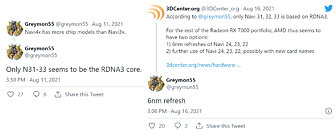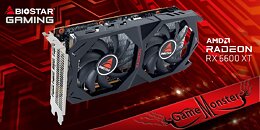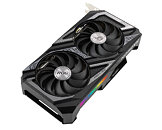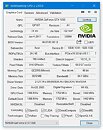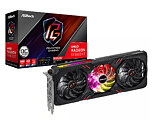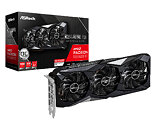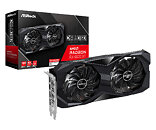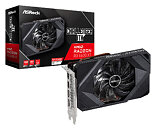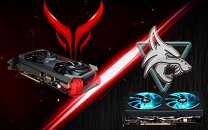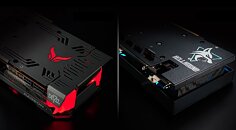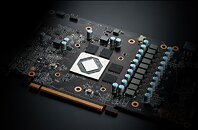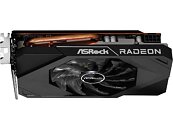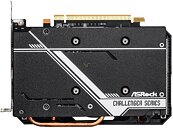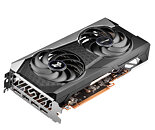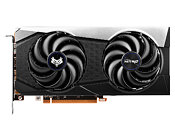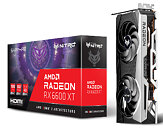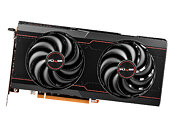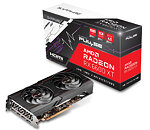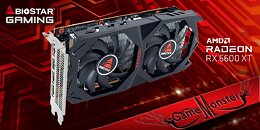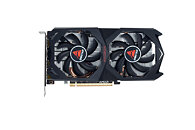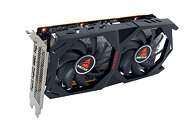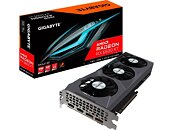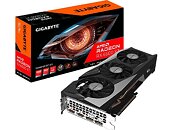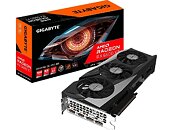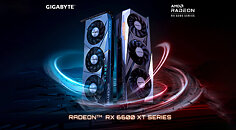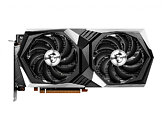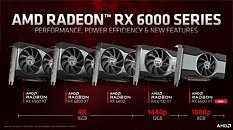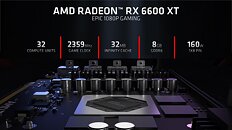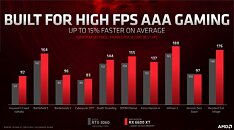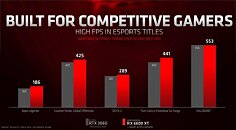
AMD Radeon RX 7600 Final Specs and Power Figures Leaked, Uses 6 nm
Here are the final specifications of the Radeon RX 7600 RDNA3 graphics card, bound for launch later this month. The specs list springs up some surprises. To begin with, while the GPU at the heart of the RX 7600 is based on the latest RDNA3 graphics architecture, it is built on the older 6 nm (DUV) silicon fabrication process—the same one on which the previous "Navi 24" was based. The silicon has a transistor count of 13.3 billion, about 2 billion more than the 7 nm "Navi 23" Powering the RX 6600 series, but a die-size of 204 mm². The GPU has a PCI-Express 4.0 x8 host interface, and a 128-bit GDDR6 memory interface. As the RX 7600, it has a TBP (total board power) value of 165 W, which is over 30 W more than the RX 6600.
At this point, it's not known whether the RX 7600 maxes out the silicon it is based on. It gets 32 RDNA3 compute units (CU), which work out to 2,048 stream processors (with the same dual-issue instruction rate feature as the RX 7900 series); 32 Ray Accelerators, and 64 AI Accelerators. The GPU has 128 TMUs, and 64 ROPs. The GPU has 32 MB of second-generation Infinity Cache memory. The 8 GB of GDDR6 memory ticks at 18 Gbps, which over the 128-bit memory bus works out to 288 GB/s of memory bandwidth. AMD claims that when coupled with the on-die cache, the "effective bandwidth" is 476.9 GB/s. NVIDIA is putting out similar "effective" figures for its RTX 4060 series, so this could become a norm. The RX 7600 comes with a game frequency of 2250 MHz, and 2625 MHz boost. AMD is making 550 W as its PSU recommendation, compared to the 450 W it did for the RX 6600. The company considers the RX 7600 to be the logical successor of the RX 6600 (and neither the RX 6600 XT nor the RX 6650 XT).
At this point, it's not known whether the RX 7600 maxes out the silicon it is based on. It gets 32 RDNA3 compute units (CU), which work out to 2,048 stream processors (with the same dual-issue instruction rate feature as the RX 7900 series); 32 Ray Accelerators, and 64 AI Accelerators. The GPU has 128 TMUs, and 64 ROPs. The GPU has 32 MB of second-generation Infinity Cache memory. The 8 GB of GDDR6 memory ticks at 18 Gbps, which over the 128-bit memory bus works out to 288 GB/s of memory bandwidth. AMD claims that when coupled with the on-die cache, the "effective bandwidth" is 476.9 GB/s. NVIDIA is putting out similar "effective" figures for its RTX 4060 series, so this could become a norm. The RX 7600 comes with a game frequency of 2250 MHz, and 2625 MHz boost. AMD is making 550 W as its PSU recommendation, compared to the 450 W it did for the RX 6600. The company considers the RX 7600 to be the logical successor of the RX 6600 (and neither the RX 6600 XT nor the RX 6650 XT).












